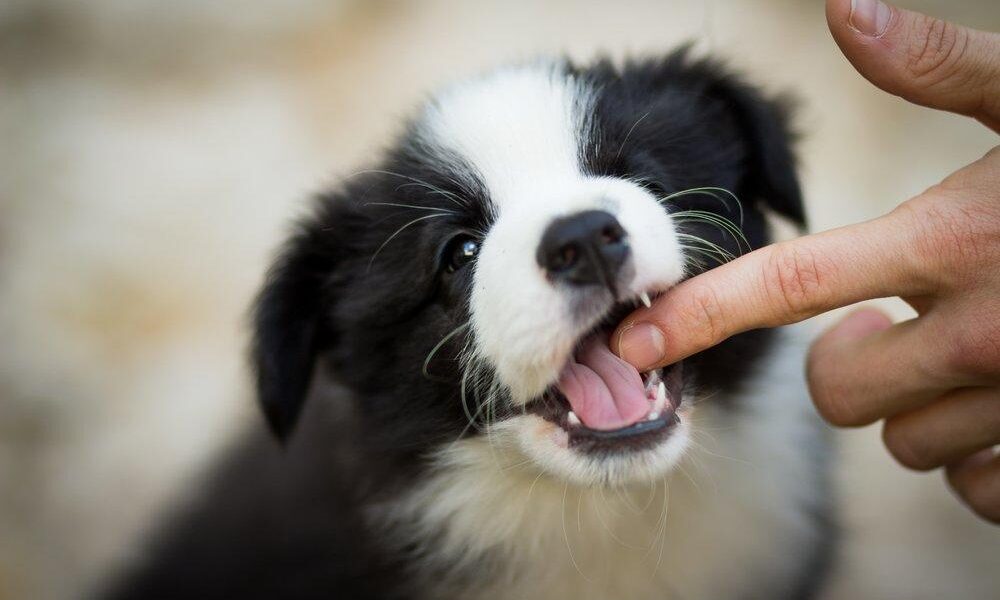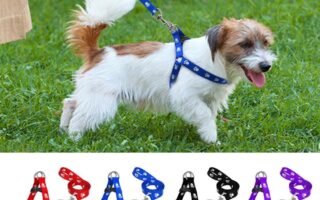Understanding Puppy Nipping: The Baby Teeth of Canine Communication
In the whimsical world of puppyhood, where boundless energy meets insatiable curiosity, a common rite of passage often takes center stage: nipping. With their tiny, needle-sharp teeth and unreserved exuberance, puppies engage in this playful yet perplexing behavior that can leave new pet owners both enchanted and bewildered. While it might seem like just a phase, understanding the nuances behind puppy nipping can offer invaluable insights into their developing personalities and communication skills. This article delves into the reasons behind this instinctual behavior, its implications for training and socialization, and effective strategies to navigate this playful challenge. So, let’s unpack the delightful, if sometimes frustrating, world of puppy nipping, and learn how to turn this playful bite into a moment of growth for both you and your furry friend.
Table of Contents
- Understanding the Causes and Triggers of Puppy Nipping
- Effective Techniques to Curb Nipping Behaviors
- Positive Reinforcement Strategies for Nipping Prevention
- Building a Strong Bond Through Play and Training
- Q&A
- To Conclude
Understanding the Causes and Triggers of Puppy Nipping
Puppy nipping is a common behavior observed in young dogs, often driven by various natural instincts and developmental stages. Understanding the underlying causes can help owners implement effective training strategies. Some key factors contributing to this behavior include:
- Teething: Just like human babies, puppies go through a teething phase where their gums feel sore, prompting them to chew and nip.
- Exploration: Puppies are naturally curious creatures; they often use their mouths to investigate their surroundings, leading them to nip at fingers, toes, and any moving object.
- Playfulness: Nipping is a part of play behavior. Puppies often engage in mock battles with their littermates, and they sometimes carry this playful nipping into their interactions with people.
However, not all nipping is benign; it can also stem from excitement or anxiety. Puppies might nip when they are overly stimulated or stressed, seeking an outlet for their pent-up energy. Acknowledging both the causes and triggers of this behavior is essential for fostering a well-behaved dog:
- Overexcitement: An exuberant puppy may nip in excitement, especially during playtime or when greeting people.
- Lack of socialization: Puppies that have not interacted sufficiently with other dogs or people may not understand the limits of acceptable behavior.
- Fear or anxiety: If a puppy feels threatened or scared, they might nip as a defensive mechanism.
Effective Techniques to Curb Nipping Behaviors
Addressing nipping behavior in puppies requires patience and consistent training techniques that promote positive reinforcement. Begin by redirecting their attention to appropriate toys and chews when they attempt to nip. This tactic helps teach your puppy what they can chew on, rather than directing their playful energy towards human skin. Reinforce the use of toys by offering praise when your puppy engages with them appropriately. Additionally, consider incorporating techniques such as yelping or making a sharp noise when nipped, simulating the natural feedback a littermate would provide. This sound signals to your puppy that their nipping is too hard and encourages them to modify their behavior.
Another effective method is to establish a firm, yet gentle, “no bite” signal. Consistently and calmly using phrases like “no bite” helps your puppy understand the boundaries of play. If nipping continues, time-outs can be beneficial; simply remove your puppy from the play space for a brief moment to emphasize that nipping results in playtime cessation. Building a structured environment can also aid in reducing excitement levels associated with playtime. Consider the following tactics for minimizing nipping incidents:
| Tactic | Description |
| Redirect to Toys | Use chew toys as a distraction. |
| Vocal Correction | Yelp or make a sharp noise to signal pain. |
| “No Bite” Signal | Use firm phrases to set boundaries. |
| Implement Time-Outs | Briefly remove your puppy from playtime. |
| Structured Environment | Limit overexcitement during play. |
Positive Reinforcement Strategies for Nipping Prevention
Implementing positive reinforcement techniques is essential for addressing puppy nipping effectively. Rather than focusing on punishing the behavior, it is much more beneficial to encourage alternative, desirable behaviors using rewards. Here are some tactics you can employ:
- Redirect Attention: When your puppy begins to nip, swiftly redirect their focus to an appropriate chew toy or a game that captivates them.
- Reward Calm Behavior: Use treats or praise when your puppy plays gently. Recognizing and reinforcing calm interactions helps instill good habits.
- Time-Outs: If nipping continues, a brief period of separation can signal that excessive biting leads to the end of fun. This teaches them the consequences of their actions.
Alongside these strategies, consistency and patience are key. It is essential to ensure everyone in your household applies the same reinforcement techniques, creating a cohesive approach. Keeping track of progress can also be beneficial. Consider using a simple table to record your puppy’s behavior over time:
| Day | Nipping Occurrences | Successful Redirections |
|---|---|---|
| 1 | 5 | 3 |
| 2 | 3 | 5 |
| 3 | 2 | 6 |
This methodology not only mitigates nipping behaviors but also fosters a positive bond with your puppy, turning training sessions into enjoyable experiences filled with mutual trust and respect.
Building a Strong Bond Through Play and Training
Engaging in play is a fundamental aspect of your puppy’s development, especially when it comes to addressing behaviors like nipping. By incorporating structured playtime into your routine, you not only enhance your puppy’s physical abilities but also teach them important lessons about interaction and boundaries. Consider the following activities to foster a mutual understanding:
- Interactive Toys: Use toys that encourage your pup to engage without using their teeth on you.
- Fetch and Tug-of-War: These games allow you to reward good behavior and discourage rough play simultaneously.
- Training Games: Incorporate obedience commands during play to reinforce discipline while enjoying fun moments together.
Training sessions are another excellent opportunity to strengthen your bond while curtailing nipping behavior. Establishing clear communication during training helps your puppy understand what’s expected of them. Here’s a simple framework to follow:
| Command | Goal | Tips |
|---|---|---|
| Leave It | Avoid nipping at your hands or belongings. | Use treats to reward them for ignoring the item. |
| No Bite | Discourage nipping at skin. | Firmly but gently say “no” and redirect to a toy. |
| Settle | Promote calm behavior. | Use a mat and reinforce with praise when they relax. |
Q&A
Q&A on Puppy Nipping: Navigating the Nibbles
Q: What exactly is puppy nipping, and why do puppies do it?
A: Puppy nipping is that adorable yet sometimes frustrating behavior where young dogs gently bite or nip at hands, feet, clothing, or other objects. This behavior is a natural part of their development, stemming from their instinctual play and exploration. Puppies use their mouths to interact with their environment, much like human babies do by grabbing and mouthing objects. It’s their way of communicating, playing, and figuring out social boundaries, both with their littermates and humans.
Q: Is nipping a sign of aggression in puppies?
A: Not at all! Puppy nipping is typically not rooted in aggression, but rather in playful energy or curiosity. However, it’s essential to differentiate between healthy play and aggressive behavior; if a puppy’s nipping involves growling, bared teeth, or appears overly forceful, it could indicate fear or discomfort. In most cases, playful nipping should be viewed as part of the playful repertoire of a young pup.
Q: How can I differentiate between playful nipping and aggressive biting?
A: Playful nipping is usually accompanied by a wagging tail, playful body language, and an eagerness to engage. An aggressive bite will often be sudden, focused more on the target, and may include signs of tension in the body, such as a stiff tail or ears pointed forward. Observing your puppy’s overall behavior can provide crucial context to the nipping incident. The key is to remain calm and assess the situation accurately.
Q: What’s the best way to manage and prevent unwanted nipping?
A: Managing nipping requires patience and consistency. Here are some tips:
- Redirect the behavior: Offer the puppy a suitable chew toy when they start to nip. This teaches them what’s appropriate to bite.
- Encourage gentle play: Use soft, interactive toys to engage in play that allows the puppy to use their mouth without utilizing your skin as a target.
- Implement ‘time outs’: If nipping becomes too intense, pause playtime and step away for a moment. This teaches them that nipping leads to the end of fun.
- Socialize your puppy: Introduce them to other vaccinated dogs and puppies in a controlled environment. This helps them learn bite inhibition through natural play.
Q: When should I start worrying about my puppy’s nipping behavior?
A: If your puppy’s nipping persists beyond their teething stage or becomes increasingly intense despite your redirection efforts, it might be time for concern. Also, if the puppy shows signs of anxiety, fear, or aggression, consider consulting a professional dog trainer or behaviorist for guidance. Early intervention is often key to ensuring a well-adjusted adult dog.
Q: Is it ever okay to punish a puppy for nipping?
A: Punishment is generally not recommended in these situations. Instead of discouraging nipping, punishment can create fear or anxiety, leading to a decline in your puppy’s trust in you. Positive reinforcement techniques—like praising calm behavior and redirecting their energy—is usually more effective in fostering good habits.
Q: Are there any long-term solutions to keep puppy nipping under control?
A: Establishing consistent boundaries and routines is crucial. Engage your puppy frequently through play, exercise, and training sessions to keep their energy in check and stimulate their minds. Additionally, consider enrolling in a puppy training class where they can learn social cues from both humans and other puppies in a structured environment. With time, patience, and practice, your pup will outgrow those nippy tendencies and emerge as a well-behaved canine companion.
To Conclude
As we conclude our exploration of puppy nipping, it’s essential to remember that this behavior, while often playful and endearing, is also a natural phase in a young dog’s development. Understanding the reasons behind this instinctive action—whether it be a display of playfulness, curiosity, or the innate desire to communicate—can empower owners to address it constructively. By employing consistent training techniques, promoting appropriate play, and fostering a gentle environment, we can guide our puppies towards more desirable behaviors. Just as we nurture their bodies and minds, patience and understanding will help bridge the gap between their playful instincts and our expectations. So, embrace this phase with compassion and creativity—your puppy will grow into a loving companion, and together, you will share countless joyful moments ahead.


